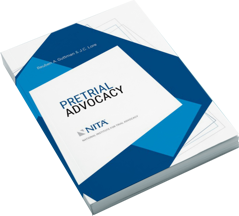The pretrial playing field has changed markedly over the last three decades, moving the battleground from the jury to the gauntlets that leave a judge with discretion to eliminate or trim a case before it even sees a jury. Standards governing motions to dismiss, summary judgment, experts, the breadth of discovery, and even class certification are the battlegrounds that often determine the fate of a case. Against this backdrop, technology – including the internet and the ability to create real-time recordings of events – has markedly changed the availability and quantity of evidence. Selecting the most compelling evidence – or deselecting evidence is a new challenge in addition to the age-old skill of constructing a narrative that glues the theories in place. Precision in the pretrial process and an appreciation for the evidentiary rules and their interface with the procedural rules are essential. From complaint preparation through discovery and motions practice, this 60-minute session will provide listeners with a crash course overview of what is needed in this new era of front-loaded litigation.
Faculty:
Reuben Guttman is a founding member of Guttman, Buschner & Brooks PLLC. His practice involves complex litigation and class actions. He has represented clients in claims brought under the Federal False Claims Act, securities laws, the Price Anderson Act, Department of Energy statutes and regulations, the Worker Adjustment and Retraining Notification Act (WARN), Racketeer Influenced and Corrupt Organizations Act (RICO) and various employment discrimination, labor, and environmental statutes. He has tried and/or litigated claims involving fraud, breach of fiduciary duty, antitrust, business interference and other common law torts. The International Business Times has called Mr. Guttman “one of the world’s most prominent whistleblower attorneys.” He has served as counsel in cases brought under the False Claims Act returning over $6 Billion to the government. Mr. Guttman served as lead counsel in a series of cases resulting in the recovery of more than $30 million under the Federal Fair Labor Standards Act and he served as lead counsel in a civil rights class action against the South Carolina Department of Corrections which resulted in a consent order requiring the testing and treatment of more than 20,000 inmates for Hepatitis C. He is co-author (with JC Lore) of the text, Pretrial Advocacy (Wolters-Kluwer-NITA, 2022). In addition, he is the author and/or editor of numerous articles, book chapters, and technical publications and his commentary has appeared in Market Watch, American Lawyer Media, Forbes, AOL Government, Accounting Today, Law 360, The Global Legal Post, and the Jerusalem Post. Mr. Guttman has testified before committees of the United States House of Representatives and the United States Senate on the Asbestos Hazard Emergency Response Act (AHERA). In 1992, he advised President-elect Clinton’s transition team on labor policy and worker health and safety regulation. Mr. Guttman earned his law degree at Emory University School of Law, where he has served as a Senior Fellow and Adjunct Professor at the Emory University School of Law Center for Advocacy and Dispute Resolution, and he has been a Team Leader for the school’s Trial Techniques Program. He is founder of, and Senior Advisor to, the Emory Law Corporate Governance and Accountability Review, and he is currently an Adjunct Professional Lecturer at the American University School of Public Affairs where he teaches Equal Protection and Civil Rights.
To learn more or register visit https://www.quimbee.com/cle/courses/pretrial-advocacy-the-era-of-front-loaded-litigation
